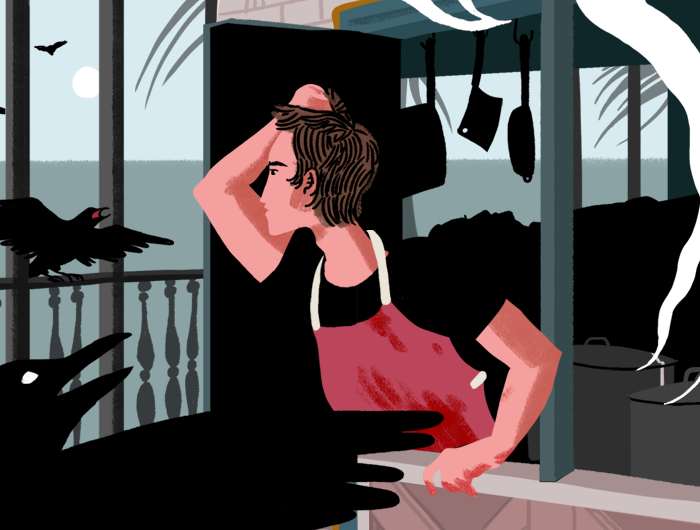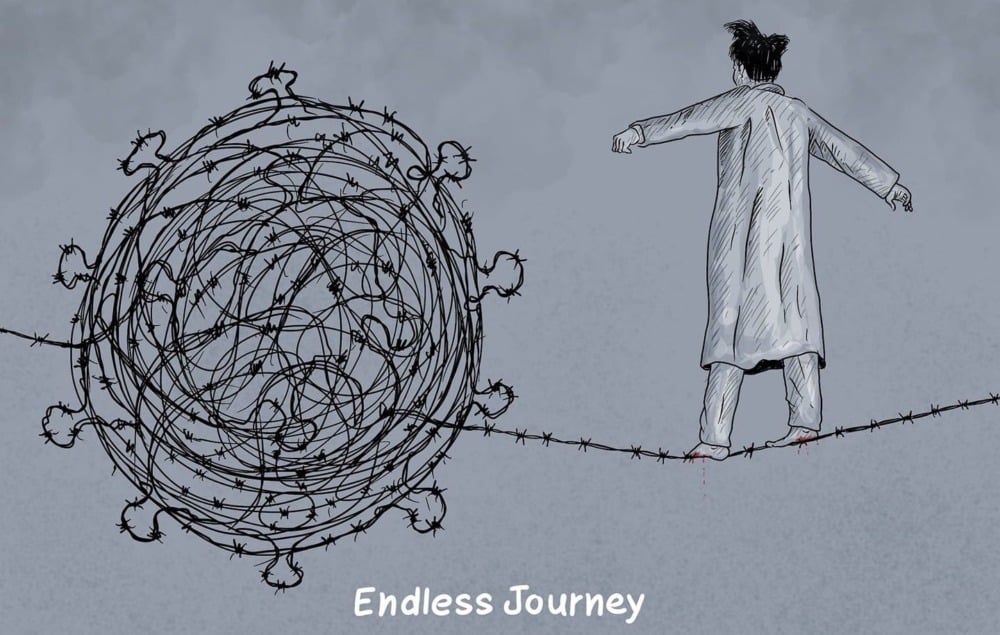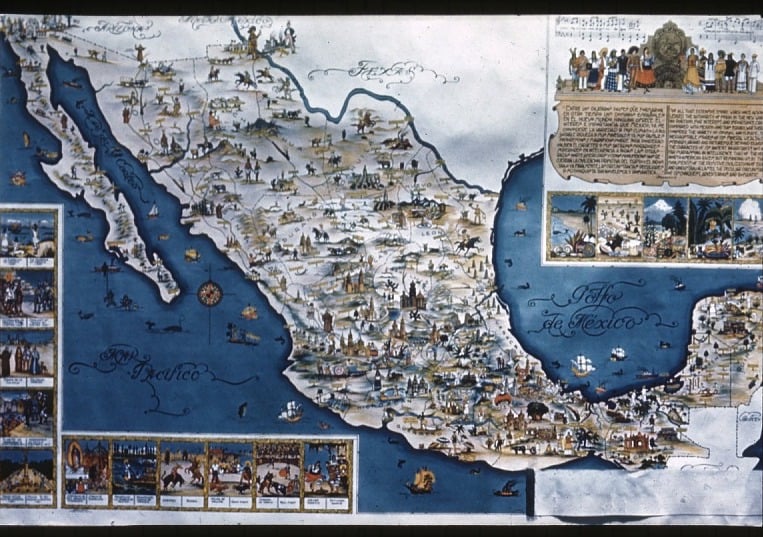
By ANNAKAI HAYAKAWA GESHLIDER, Rafu Intern
“That was probably the strength of this book: I didn’t know what I was doing.”
So said Allen Say, author of the new children’s book “Almond,” at the Japanese American National Museum on March 7. “Almond” was released just four days earlier, in celebration of Hinamatsuri.
In 2000, JANM held a retrospec-tive of Say’s original drawings and paintings, and since then, Say has released several of his books at the museum.
 The book talk was part of the day-long community event Chal-lenging Borders, put on in tandem with the museum’s current exhibit. In the exhibit, called “Transcendi-ents: Heroes at Borders,” artist Taiji Terasaki honors people from L.A. and beyond fighting discrimination and injustice at borders — physical and not — around the world.
The book talk was part of the day-long community event Chal-lenging Borders, put on in tandem with the museum’s current exhibit. In the exhibit, called “Transcendi-ents: Heroes at Borders,” artist Taiji Terasaki honors people from L.A. and beyond fighting discrimination and injustice at borders — physical and not — around the world.
Say’s latest tells the story of Al-mond, a seven-year-old girl faced with a new girl in school — a violin prodigy. Almond feels she is known only for her beautiful hair, and longs for a talent, like her new classmate. Say combines sparse words with pas-tel drawings and charcoal sketches.
At the talk, Say projected pages of his new book and described his process. To create “Almond,” Say drew in pastel atop photographs, a new style for his work. Many of the photographs upon which Say drew resulted from moving the camera while the shutter was open.
“That blurred thing — the won-derful thing that happens — most people throw [those pictures] out,” said Say. The book is “set between reality and dream,” he added. “It’s a very narrow space.”
Say admires 18th-century artists Sengai Gibon and Yosa Buson, whose sumi-epaintings combined text and image — just like picture books. In an interview with the American Lit-erary Association, Say said he views picture books as a form of haiga, the “combination of haiku and picture that sets off a resonating music that you hear with your eyes.”
Say was born in Yokohama in 1940 to Japanese and Korean parents. Determined to become a cartoonist after the war, Say apprenticed him-self to the artist Noro Shinpei at the age of 12. At 16, he made his way to Los Angeles in search of work, and has lived mainly in the United States since.
While attending high school in Azusa, Say continued to study art. For years Say worked as a com-mercial photographer, alternating photography with drawing and painting. In the 1970s, he wrote and illustrated his first book, “Dr. Smith’s Safari,” and began illustrating for other authors.
In the late 1980s, Say quit pho-tography completely and committed to writing and illustrating books for kids. Say has now both written and illustrated nearly 30 books.
Like “Almond,” many of Say’s books deal in dreams, in longing for something else. Say’s “Grandfa-ther’s Journey” tells the tale of his ojii-chan’s back-and-forth journeys between Japan and the United States. “Sleeping and waking are two sides of the same continuum,” said Say, de-scribing his work on “Grandfather’s Journey” in 1998.
When asked how he feels return-ing to Little Tokyo, Say expressed similar feelings conveyed in “Grand-father’s Journey.” “Of course it’s not the same place anymore…and, it’s the same thing that I feel everywhere I return to. It’s not there anymore. The Japan that I knew I grew up in doesn’t exist.”
At the end of “Grandfather’s Jour-ney,” Say recalls his own childhood in Japan. “I miss my old friends. So I return now and then, when I can not still the longing in my heart,” Say writes. “The funny thing is, the moment I am in one country, I am homesick for the other.”
Dorothy Yumi Garcia, a teacher who attended the book talk, has been collecting Say’s work since the ’90s. Garcia teaches children’s literature, and brought a class of students to Say’s exhibit at JANM in 2000. She feels that Say’s work plays a crucial role in the world of children’s litera-ture. “I mean, how many children do you see illustrated that are Asian, not from the internment, and not looking like a doll?” she said.
Garcia believes teachers have a strong responsibility to rep-resent everyone in their classrooms. She has a collection of 3,000 books, most of which are “children’s books that tell stories of underrepresented people and underrepresented situa-tions — incarcerated families, very early gay families, black, white, tan.”
In her classes on children’s litera-ture, Garcia asks students to examine which books receive awards. “You have to be very mindful of the sourc-es who are rewarding these things and what they’re about,” she said.
Garcia feels that Say’s work of-fers a fresh breath from the tropes present in literature about children of color. Often, children’s books can “over-exoticize people who built this country.” Instead, Say’s work “tells a story that’s…not always about your suffering,” said Garcia.
“Not every children’s book about somebody who’s Asian needs to be about the camps. While that is impor-tant, a lot of Asian children just play video games. And not everybody likes sushi, and sometimes they just want a burger.”
Find “Almond” and Say’s other books at the library or at JANM’s bookstore.
 Author Umemoto to Speak at Manzanar
Author Umemoto to Speak at Manzanar
 A Culture of Resistance
A Culture of Resistance
 The new Dyson Airwrap comes with an app and three new attachments
The new Dyson Airwrap comes with an app and three new attachments
 Vuelta a Espa?a 2024 livestream: How to watch Vuelta a Espa?a for free
Vuelta a Espa?a 2024 livestream: How to watch Vuelta a Espa?a for free
 G2 return to winning ways against MIBR in Malta
G2 return to winning ways against MIBR in Malta
 Cannibal Pentecost
Cannibal Pentecost
 Occupation Without End
Occupation Without End
 One Man’s Trash
One Man’s Trash
 NAVI set for clash with Liquid after opening wins
NAVI set for clash with Liquid after opening wins
 Las Vegas Aces vs. Dallas Wings 2024 livestream: Watch live WNBA
Las Vegas Aces vs. Dallas Wings 2024 livestream: Watch live WNBA
 Spirit win FiReLEAGUE Global Finals
Spirit win FiReLEAGUE Global Finals
 The Neo-Imperialist’s Burden
The Neo-Imperialist’s Burden
 I Saw the Sign
I Saw the Sign
 The Neo-Imperialist’s Burden
The Neo-Imperialist’s Burden
 Obon Carnival and Dance at Nishi Hongwanji
Obon Carnival and Dance at Nishi Hongwanji
 Galatasaray vs. Young Boys 2024 livestream: Watch Champions League for free
Galatasaray vs. Young Boys 2024 livestream: Watch Champions League for free
 Wordle today: The answer and hints for August 26
Wordle today: The answer and hints for August 26
 The Map and the Territory
The Map and the Territory
 k0nfig: "I really wanted to beat Astralis, I wanted to show them what they're missing"
k0nfig: "I really wanted to beat Astralis, I wanted to show them what they're missing"
 Conspiracy of Silence
Conspiracy of Silence
Little Tokyo Sparkle Roars Back After HiatusMainland slams Lai ChingYokoyama ReTaiwan authorities' soMainland slams Lai ChingFeature: Ferryman of souls escorts cremains of veterans from Taiwan to mainland homeDouble Honor for San Gorgonio’s Matt MaedaMini Three Links passenger surges, Spring Festival expected to draw 200,000Mainland welcomes more Taiwan residents to settle in mainland: spokespersonMainland camp lures youth from Taiwan Mexc Grows Global Reach With 17 New Languages Program on Gardeners’ Poetry on Sept. 3 Tribute to Masao Iriyama: A Legend of Nisei Baseball ‘Kintsugi 2024!’ Conference on Healing Trauma of WWII Incarceration of JAs 'In This Corner of the World' Playing in San Diego ‘Sansho the Bailiff’ Screening at Faith UMC Little Tokyo Library Quilt Show Set for Aug. 19 OBITUARY: May (Hinoki) Mineta, 1934 Transformation Workshop at Far East Lounge GVJCI Announces 2024 Scholarship Recipients
0.1403s , 14313.9453125 kb
Copyright © 2025 Powered by 【indian girls sex dance videos】Say's 'Almond' Dreams in Living Color,Global Hot Topic Analysis